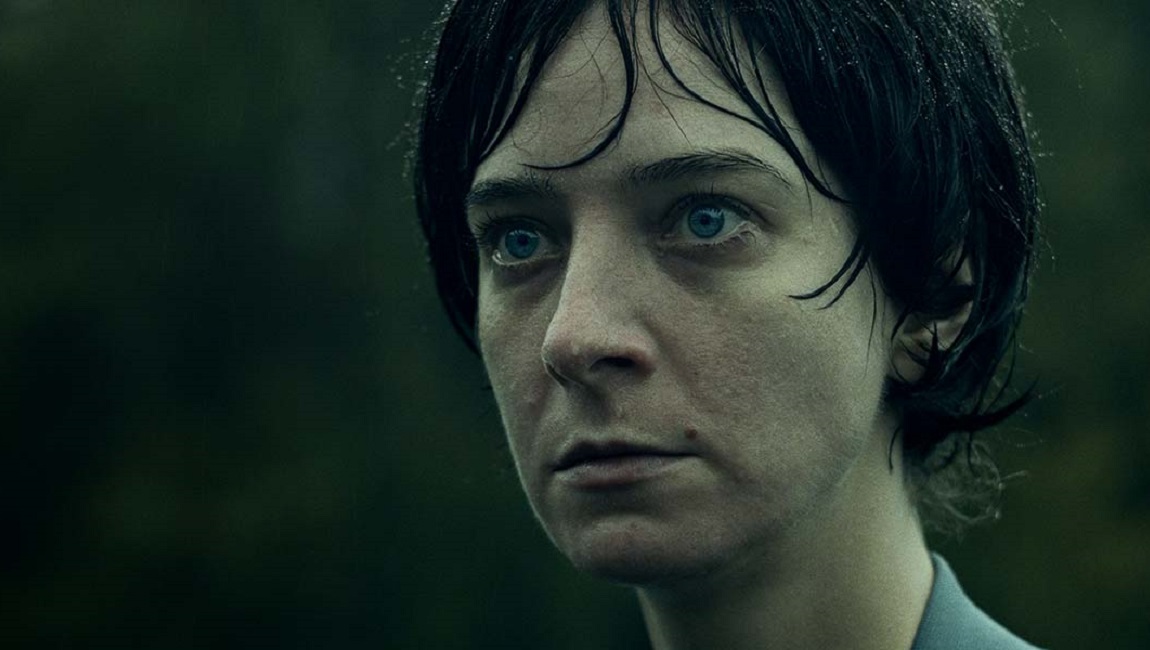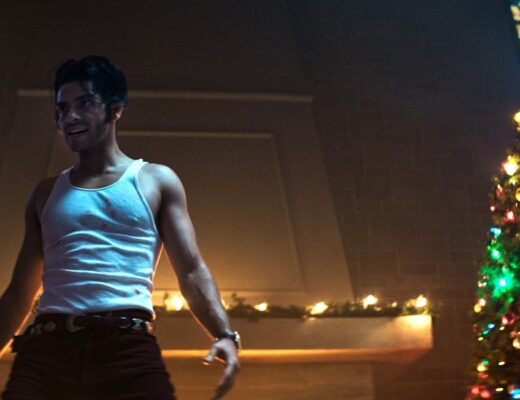Beginning in 2015, following the (by all accounts exhausting) production of Phoenix, Christian Petzold returned to television, where he began his career in the 1990s and would intermittently return to in the following decade. As explored elsewhere in our Retrospective series, German television was largely conducive to auteurist experiments, and Petzold was able to pursue his own formal and thematic concerns with little interference and less pressure to produce box office results. Following the 2011 Dreileben series — three interlocked telefilms directed by Petzold, Dominik Graf, and Christoph Hochhäusler — Petzold would helm three episodes of the long-running German cop show Polizeiruf 110. All three — Kreif (2015), Wolfe (2016), and, under consideration here, Tatorte (2018) — are the length of traditional feature films and star Matthias Brandt and Barbara Auer as police inspectors navigating a rocky professional and personal relationship. Both actors are, of course, familiar from previous Petzold films, particularly Auer, who’s worked with Petzold since his breakthrough effort The State I Am In in 2000. An anthology show of sorts, Polizeiruf 110 shuffles through a revolving cast of actors who appear regularly but not always sequentially; case in point, Brandt and Auer play the same characters in all three of Petzold’s efforts, spread out over three years. But while Auer is featured in a fourth entry sans Petzold, Brandt was associated with the program for 15 episodes over the course of 8 seasons, with Tatorte marking the final appearance of his character, Hanns von Mueffels.
Without seeing the previous Petzold efforts, it’s impossible to detail the intricacies of these characters or the broader serialized elements of the Polizeiruf 110 series, but Tatorte is largely legible to newcomers. Vaguely resembling an episode of CSI or Law & Order (complete with aggressively-stylized opening credits), Tatorte begins with a crime, proceeds to track the ins and outs of the investigation, and ends with a suspect brought to justice. But within this generically familiar set of parameters, Petzold finds all manner of nuance. After a woman is gunned down by a masked assailant, her child fleeing into the nearby woods to avoid her own death, Inspector Mueffels is called in to work the crime scene. He’s paired with a new partner, the young, extremely talkative Nadja (Maryam Zaree), who is enthusiastic but naive. Meanwhile, Mueffels is trying to repair his relationship with Constanze Hermann (Auer), who has moved out of their apartment and fled Munich for Nurnberg. While this subplot provides an emotional framework for the film, the bulk of the runtime is spent on the twisty procedural elements of the investigation. Mueffels and Nadja spend a lot of time driving in cars together, mulling over evidence, and throwing out theories. All signs point to the victim‘s ex-husband (and father of the young survivor) as the perpetrator, but Mueffels is convinced that, despite ample circumstantial evidence, it doesn’t add up.
More interesting throughout all this is Petzold’s emphasis on a sort of self-reflexive critique of narrative itself. Mueffels gruffly interrogates Nadja on her speech patterns and the way she artificially injects pauses into her conversations, a purposeful affectation she acquired during training. Elsewhere, Petzold seems determined to really lean in to the scopophilic nature of these violent crime series. Hermann has taken a job staging fake crime scenes at the police academy for students to investigate, which creates a fascinating series of mini-narratives within the overarching structure of the film proper. Further, a sexually explicit photograph factors prominently into the narrative, as Nadja and Mueffels pour over it for clues and ponder the ontological nature of pornography. Everywhere Petzold emphasizes looking; even the inciting murder takes place in a symbolically loaded location, an abandoned drive-in movie theater with two large, empty white screens overlooking the scene of the crime.
Tatorte abounds with Petzold’s favored visual motifs; long scenes transpire inside moving cars, or in the sterile environments of a hospital, while his camera tends to isolate characters into single shots instead of grouping them together. It’s remarkable how of a piece Tatorte is with his larger body of work — even within the prescribed confines of serialized, procedural television, Petzold finds ways to expand and interrogate the genre.
Part of Christian Petzold: In the Cut.







